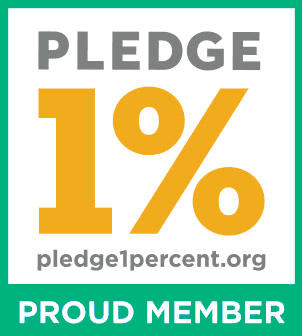9 Most Sustainable Cashmere Clothing Brands: The Conscious Consumer’s Guide
Affiliate Disclosure
Hey fellow impactful ninja ?
You may have noticed that Impactful Ninja is all about providing helpful information to make a positive impact on the world and society. And that we love to link back to where we found all the information for each of our posts.
Most of these links are informational-based for you to check out their primary sources with one click.
But some of these links are so-called "affiliate links" to products that we recommend.
Why do we add these product links?
First and foremost, because we believe that they add value to you. For example, when we wrote a post about the environmental impact of long showers, we came across an EPA recommendation to use WaterSense showerheads. So we linked to where you can find them. Or, for many of our posts, we also link to our favorite books on that topic so that you can get a much more holistic overview than one single blog post could provide.
And when there is an affiliate program for these products, we sign up for it. For example, as Amazon Associates, we earn from qualifying purchases.
What do these affiliate links mean for you?
First, and most importantly, we still only recommend products that we believe add value for you.
When you buy something through one of our affiliate links, we may earn a small commission - but at no additional costs to you.
And when you buy something through a link that is not an affiliate link, we won’t receive any commission but we’ll still be happy to have helped you.
What do these affiliate links mean for us?
When we find products that we believe add value to you and the seller has an affiliate program, we sign up for it.
When you buy something through one of our affiliate links, we may earn a small commission (at no extra costs to you).
And at this point in time, all money is reinvested in sharing the most helpful content with you. This includes all operating costs for running this site and the content creation itself.
What does this mean for me personally?
You may have noticed by the way Impactful Ninja is operated that money is not the driving factor behind it. It is a passion project of mine and I love to share helpful information with you to make a positive impact on the world and society. However, it's a project in that I invest a lot of time and also quite some money.
Eventually, my dream is to one day turn this passion project into my full-time job and provide even more helpful information. But that's still a long time to go.
Stay impactful,
Cashmere is the soft and fine fiber that used to be reserved for the few most luxurious items in one’s wardrobe. Fast fashion has changed that by bringing cheaper cashmere sweaters, gloves, and scarves into department stores. The falling price of cashmere has happened almost simultaneously with intensified animal cruelty and ecological crises in places where these wonderful and unmatchable fibers originate. Furthermore, fashion greenwashing makes it hard for you and all other consumers to determine which cashmere garments are sustainable. So, we had to ask: Which are the most sustainable cashmere clothing brands?
The most sustainable cashmere clothing brands are Patagonia, Reformation, and Ecoalf, which cut down the carbon footprint, employ full traceability, and strive for circularity. In addition, ASKET and Rifò use low-impact, high-quality recycled materials and adhere to ethical practices.
Whether you are searching for a winter coat, a sweater, or a pair of gloves to add to your wardrobe without negatively impacting the soil, the water, the animals, and other people, there is a brand for you. So, let’s keep reading to learn more about the most sustainable cashmere clothing brands and how they ensure sustainable, ethical practices.
Here’s How Sustainable Cashmere Fabrics Generally Are
Cashmere is a biodegradable fabric made with extremely fine hair from the undercoat of a specific goat breed originating in Kashmir, India. During the usage phase, cashmere clothing and household items can be washed sparsely, saving water and energy. As an animal-derived product, cashmere fabrics share the impact that farming has on the land and the cashmere goats themselves. Such an impact can be reduced by sourcing responsible, regenerative, and organic cashmere. It’s also important to note that recycled wool, cashmere variety included, is ranked class A—the most sustainable category of fibers by The Common Objective’s Made-By Environmental Benchmark for Fibres.
“Sustainable: The ability to be maintained at a certain rate or level | Avoidance of the depletion of natural resources in order to maintain an ecological balance”
Oxford Dictionary
To understand the sustainability of cashmere, we’ve assessed the life-cycle and each stage’s sustainability. This life-cycle assessment (LCA) is a method to evaluate the environmental impacts of products and materials. Here’s the quick summary of our LCA of cashmere!
What makes sustainable cashmere: Recycled cashmere is considered the most sustainable cashmere variety because using discarded cashmere (wool) materials to make recycled cashmere fabrics reduces pressure on land, water, and other resources needed for rearing more cashmere goats. At the same time, diverting discarded cashmere fabrics back into the economy slows down the demand for land needed for waste storage.
Additionally: Cashmere fabrics made with fibers from organic and regenerative farming systems are also considered sustainable because these natural fibers are cultivated ethically without any added toxic synthetic chemicals and, thus, are fully biodegradable at the end of their life.
Here’s How We Selected the Most Sustainable Cashmere Clothing Brands
The brands on this list were chosen based on their commitment and actions to promote sustainable practices while reducing the environmental impacts of the textile industry.
They are transparent about their materials, processes, and workforce management within their supply chain.
Some brands focus their efforts on reducing waste and optimizing natural resources while others strive to reduce the carbon footprint of their clothes.
All of these brands share the commitment to reshape the textile industry toward a more sustainable and Earth-friendly sector.
These Are the 9 Most Sustainable Cashmere Clothing Brands
Most Sustainable Cashmere Clothing Brands
Overall, these cashmere clothing brands are sustainable. Yet, they take various approaches to reduce environmental impacts and uphold ethical standards. Let’s dive into each brand and find out more.
Patagonia: Everyday Wear for Those Who Care
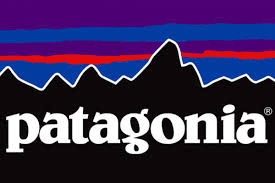

“Together, we can prioritize purpose over profit and protect this wondrous planet, our only home.”
Patagonia
🌎
How do they ensure their sustainability?
Patagonia puts sustainability at the center of their operation.
- They work to reduce, rather than simply offset, carbon emissions where it matters the most: in the supply chain and in material manufacturing. They reduce their carbon footprint by removing high-impact virgin fossil-based fibers from their collections, using “Environmental Profit and Loss” to guide their production decision, and helping their suppliers to cut emissions. For example, Patagonia’s fall 2023 collection was made up mostly of preferred materials (91% by fabric weight), including Regenerative Organic Certified fibers, hemp, man-made cellulose fibers, recycled cotton, and recycled polyester.
- On top of that, Patagonia’s Worn Wear Program encourages customers to repair and recycle their products, extending the textile lifecycle and reducing waste.
- Lastly, Patagonia is certified as a B Corporation and a Bluesign® brand.
🌐
How do they ensure their ethics?
Patagonia commits to fair trade practices. Through the partnership with Fair Trade USA, they currently produce 86% of their clothes in 20 Fair Trade Certified™ factories.
- Patagonia also pays a premium for every item produced in such factories, accumulating in a fund for workers to use in their chosen community projects, whether in healthcare or parent support or to withdraw as a cash bonus.
- Additionally, they have various social responsibility programs to prevent harm and create positive impacts on the lives of apparel workers in their supply chain. These include the Fair Labor Association, the Living Wage Program, the Migrant Workers Program, and the Responsible Purchasing Practices.
Patagonia is also fully transparent about the locations of their facilities and suppliers.
🤝
Are they part of any giving-back programs?
Since 1985, Patagonia has pledged 1% of sales annually to environmental causes. They have awarded over $89 million in cash and in-kind donations to domestic and international grassroots environmental groups, making a difference in their local communities. In 2022, the founder of Patagonia gave away his family’s ownership of the company to the newly created Patagonia Purpose Trust and the not-for-profit organization Holdfast Collective, ensuring that all future profits from the company are used to fight the climate and extinction crisis.
🛍️
What is their product range?
- Best for: kidswear, menswear, womenswear
- Product range: shirts, pants, jackets, blazers, hoodies, sweatshirts, T-shirts, shorts, plus-size
- Price range: $$$
- Size range: XXS–XXXL
Reformation: Clothes Made Smarter, Better, and for Good

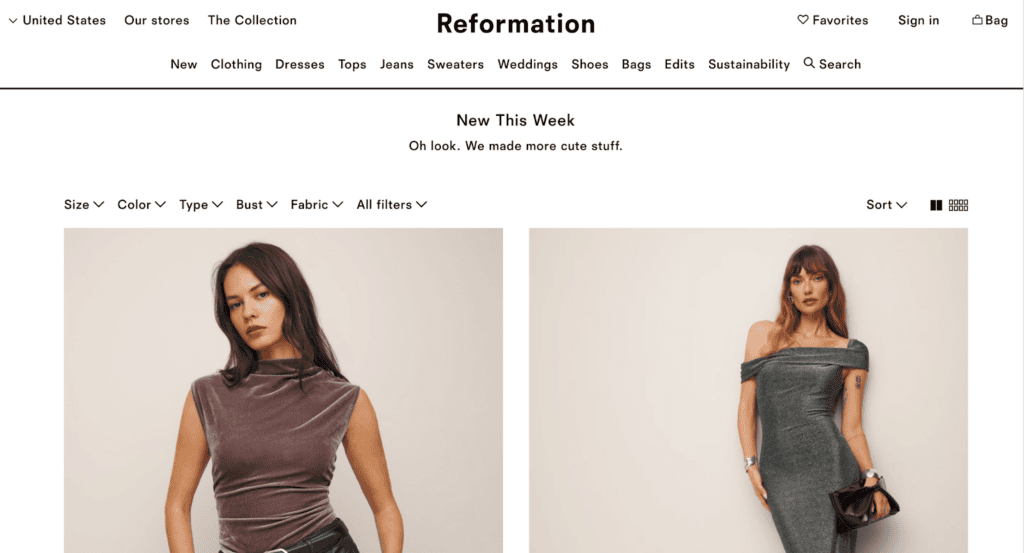
“We’re committed to pushing the industry forward and investing in future-focused solutions, which is why we’re a certified Climate Neutral company and will be Climate Positive by 2025.”
Reformation
🌎
How do they ensure their sustainability?
Reformation commits to better fabrics, aiming to trade all virgin materials for recycled, regenerative, or renewable ones by 2025.
- Their most preferred fabrics include recycled cotton, regenerative cotton, TENCEL™ Lyocell, TENCEL™ x REFIBRA™, and deadstock, accounting for 32% of all their clothes. They have committed to becoming circular by 2030 by designing out waste at every stage of production, turning any occurring production waste into new products, and using renewable and regenerative practices for necessary virgin materials.
- Furthermore, their RefRecycling incentive enables customers to sell their preloved Reformation clothes for store credits. Such items will be broken down into fibers and turned into new products.
- Reformation also connects their suppliers with environmental solutions such as renewable energy, water-saving technologies, energy reduction solutions, chemical input optimization, and wastewater management. In addition to that, they openly share the carbon and water footprint of each product they make, fostering transparency and accountability in the fashion industry.
🌐
How do they ensure their ethics?
Reformation is fully transparent about where their clothes are made and the practices in such factories.
- Their Supplier Code of Conduct is based on International Labor Organization (ILO) standards.
- Furthermore, their factory list shares many details about their factories, including whether a union and a collective bargaining agreement are present and the last audit. They have also aligned with the Transparency Pledge and are participating in the Open Supply Hub to expand on the details that are made public so they can be more accountable for the working conditions in their partner factories.
- On top of that, they give workers at their vendors a voice to bring up problems regarding their working conditions, level of happiness, working hours, and wages, and collaborate with vendors to ensure necessary improvements. Reformation is also a member of the Fair Labor Association, an initiative committed to promoting fair labor standards worldwide.
🤝
Are they part of any giving-back programs?
Reformation is not known to be part of any giving-back programs.
🛍️
What is their product range?
- Best for: womenswear
- Product range: dresses, tops, bodysuits, denim, cardigans, sweaters, wedding dresses, shoes
- Price range: $$$
- Size range: XS–XL
Ecoalf: Committing to Recycling Waste and Cleaning the Environment


“I believe the time when fashion was just about looking good is over. More than ever it has to be about doing what is right and feeling good about it.”
Javier Goyeneche, founder of Ecoalf
🌎
How do they ensure their sustainability?
Ecoalf’s commitment to sustainability is evident in their innovative recycling practices.
- They minimize the use of natural resources by using mainly waste as raw materials, collecting and transforming discarded materials into recycled fabrics like recycled polyester, recycled nylon, recycled cotton, recycled wool, and recycled cashmere.
- In 2023, they launched their first 100% recycled cotton collection that can be recycled again to achieve circularity. Back further in 2021, 74% of the materials used by Ecoalf were recovered from waste, saving 1,377 tons of CO2.
- In combination with recycled fabrics, Ecoalf uses a small percentage of low-impact natural fabrics, such as linen and kapok. Ecoalf is also Bluesign® and B Corporation certified.
🌐
How do they ensure their ethics?
Ecoalf ensures their ethics by protecting their workers and the environment.
- In particular, they ensure there are safe and fair working conditions in their supply chain by mandating a Code of Conduct, an Equality Scheme, a Crime Prevention Handbook, a Disciplinary System, and a Bullying at Work Protocol.
- Additionally, they run many campaigns to raise awareness of the state of our oceans and earth-damaging consumerism habits.
🤝
Are they part of any giving-back programs?
Ecoalf actively participates in giving-back programs. The Ecoalf Foundation was founded to clean the oceans of marine waste with the help of the fishing industry while giving a second life to plastic waste through recycling and closing the loop. They achieve that with the “Upcycling the Oceans” projects. In 2021, Ecoalf donated 10% of all Because There’s No Planet B sales to the Ecoalf Foundation to expand the “Upcycling the Oceans” project beyond the Spanish border and into countries like Thailand, Greece, and France. The foundation also partners with Biotherm to set up the framework of “Limpia ríos, salva océanos”, a project supported by corporate volunteer days to collect waste and restore the environment. Additionally, Ecoalf’s employees volunteer in various environmental incentives.
🛍️
What is their product range?
- Best for: womenswear, menswear, kidswear
- Product range: shirts, pants, jackets, blazers, hoodies, sweatshirts, tops, blouses, knitwear, T-shirts, sneakers, accessories
- Price range: $$
- Size range: XS–XL
ASKET: Timeless Clothes Made Under Full Transparency and With Life-Cycle Responsibility
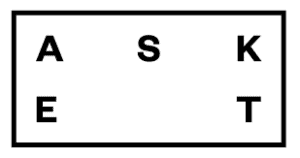

“Our mission is to end overconsumption and restore value to the clothing industry.”
Jakob Dworsky, founder of ASKET
🌎
How do they ensure their sustainability?
ASKET ensures sustainability by reducing waste and using less energy throughout the life-cycle of their garments.
- They tackle the textile waste problem with their Repair Program, which helps keep clothes last longer, and their Revival Program, which diverts used garments from landfills to be repaired, renewed, resold, or recycled. On top of that, they use various recycled fabrics, including GRS-certified recycled wool, recycled cotton, and recycled silk. ASKET also runs a Care Program, helping customers keep their garments fresh longer while using less energy, lowering the environmental impact of the usage stage.
- Additionally, ASKET’s collection includes eco-friendly materials such as organic cotton, linen, and TENCEL™ lyocell. And finally, in an effort to encourage customers to buy and waste less, they are fully transparent about the environmental impact of their clothes.
🌐
How do they ensure their ethics?
ASKET maintains ethics through fair labor practices, responsible sourcing, and a commitment to transparency in their supply chain.
- In 2022, their average traceability score across their entire collection was 96.0%.
- Regarding animal rights, they follow the Responsible Wool Standard, appropriately addressing sheep’s welfare and the land they graze on. Additionally, they do not use wool from mulesed sheep.
🤝
Are they part of any giving-back programs?
ASKET is not known to be part of any giving-back programs.
🛍️
What is their product range?
- Best for: high-quality, essential, versatile wardrobe pieces
- Product range: tops, sweaters, pants, chinos, jackets, coats, socks, underwear
- Price range: $$$
- Size range: XS–XXL
Rifò: Fashionable and High-Quality Garments Made With Recycled and Recyclable Materials

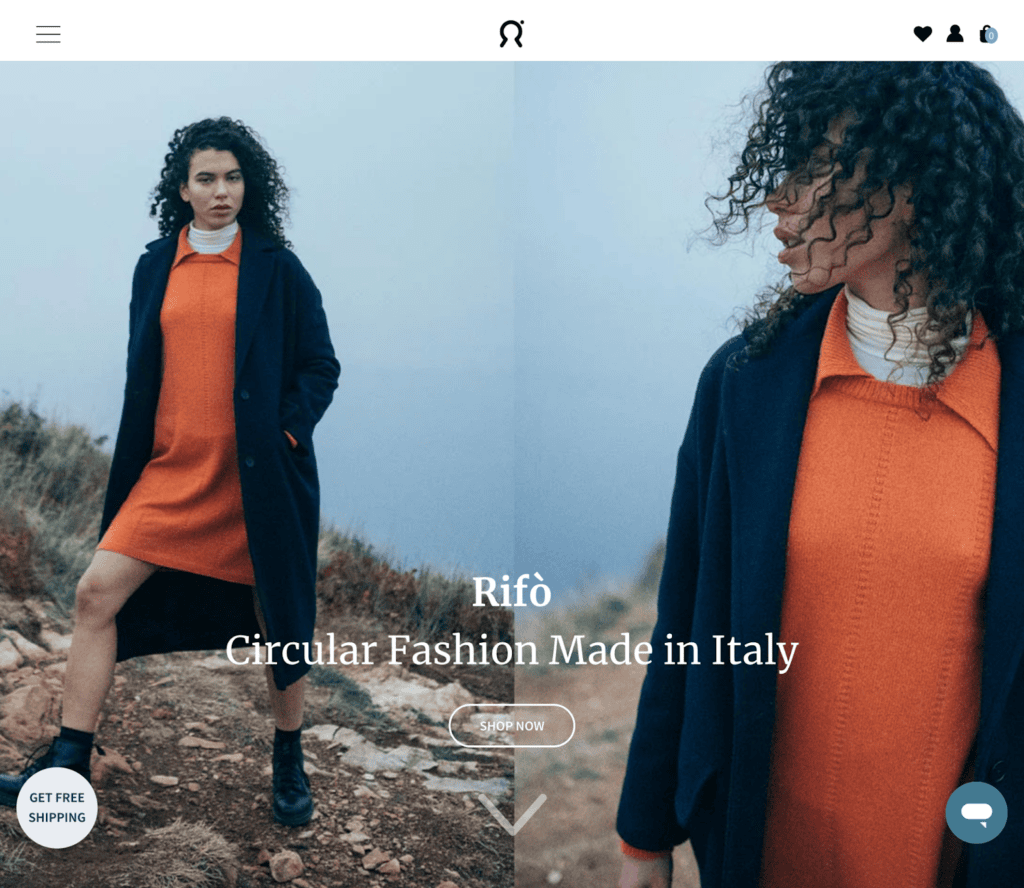
“Our planet is no longer capable of sustaining the rhythms of Fast Fashion: it is necessary to create sustainable alternatives for a better future.”
Rifò
🌎
How do they ensure their sustainability?
Rifò approaches sustainability by committing to using recycled and recyclable fibers.
- They opt for natural, biodegradable materials composed of at least 50% recycled fibers, such as recycled cashmere, recycled wool, recycled (organic) denim, recycled (organic) cotton, and recycled silk.
- Also, their packaging is made with recycled cardboard and is plastic-free. On top of that, they embed circularity principles in every step of their products’ life-cycle, meaning beyond material sourcing, these principles apply to designing, manufacturing, and end-of-life too.
- Additionally, Rifò fights textile waste by running a presale system to minimize overproduction and take back used garments to reuse or recycle. Customers can trade in their pre-loved items for a €10 ($11) discount voucher by using a free-of-charge home pickup service or a drop-off box. In 2022, 14% of the recycled materials used in their clothes was collected directly from their circular service. Rifò also joined the movement to boycott Black Friday’s rampant consumerism.
- Last but not least, they are B Corporation certified.
🌐
How do they ensure their ethics?
Rifò binds their suppliers with a Code of Conduct covering the ILO’s Four Fundamental Freedoms principles. They trace most of their supply chain.
🤝
Are they part of any giving-back programs?
Rifò donates €2 ($3) from each purchase on their online store to Nei Nostri Panni, a social impact project to train textile-recycling artisans and spinners who are in vulnerable situations. Additionally, Rifò supported Fashion Revolution by donating part of the sale from their Green Friday’s regenerative cashmere sweater edition.
🛍️
What is their product range?
- Best for: womenswear, menswear, kidswear
- Product range: sweaters, denim, polos, tops, blouses, T-shirts, shorts, plus size
- Price range: $$
- Size range: XS–XL\
Amour Vert: Stylish and Environmentally Friendly Clothing Made in the US

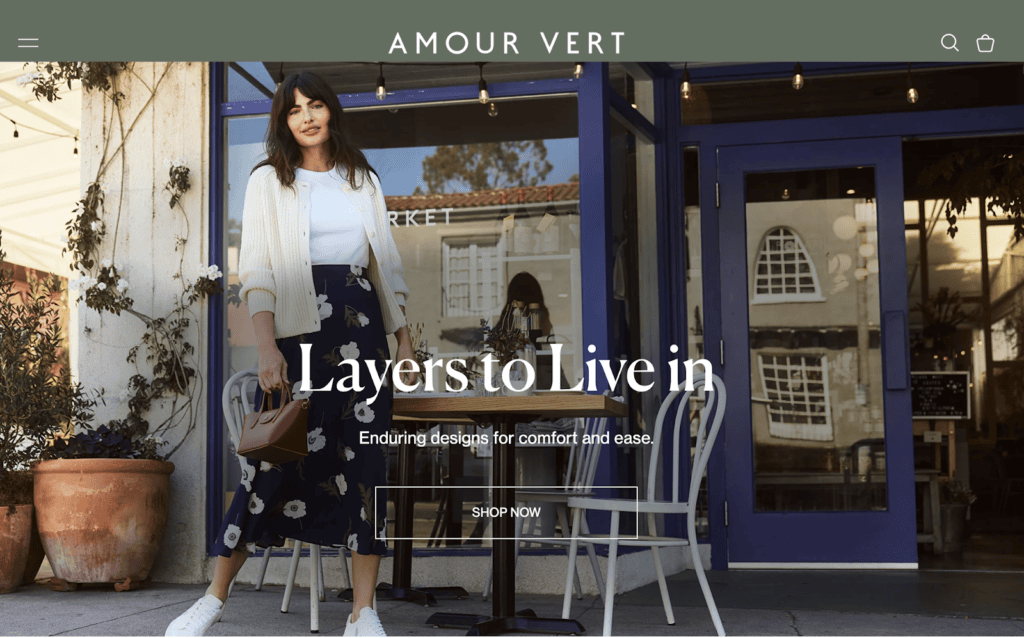
“Our sustainable practices address all aspects of our business operations and the full lifecycle of the garment: the fibers and production processes used, how workers are treated, how it gets to the consumer, and finally—whether it can be recycled or is forced into a landfill.”
Amount Vert
🌎
How do they ensure their sustainability?
Amour Vert ensures sustainability by using traceable, eco-friendly materials and promoting circular fashion.
- They use a medium proportion of lower-impact fibers, including organic cotton, linen, and Lenzing’s lyocell, modal, and viscose.
- Additionally, they opt for recycled varieties of higher-impact fabrics, such as polyester and cashmere, to reduce their carbon footprint. The silk used in Amount Vert’s collection is Bluesign® certified.
- Regarding circular fashion initiatives, Amour Vert uses deadstock fabric and sells pre-loved clothing through their resale marketplace, ReAmour.
🌐
How do they ensure their ethics?
Amour Vert traces part of their supply chain, including suppliers in the final stage of production, which happens in the US.
🤝
Are they part of any giving-back programs?
Amour Vert partners with American Forests® to plant trees in North America: with every purchase of a tee, they plant a tree.
🛍️
What is their product range?
- Best for: womenswear
- Product range: shirts, denim, sweaters, dresses, pants, tops, blouses, T-shirts
- Price range: $$
- Size range: XS–XXL
PANGAIA: Comfort-Focused Clothing Made Sustainably With Innovative Textiles
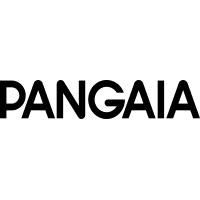
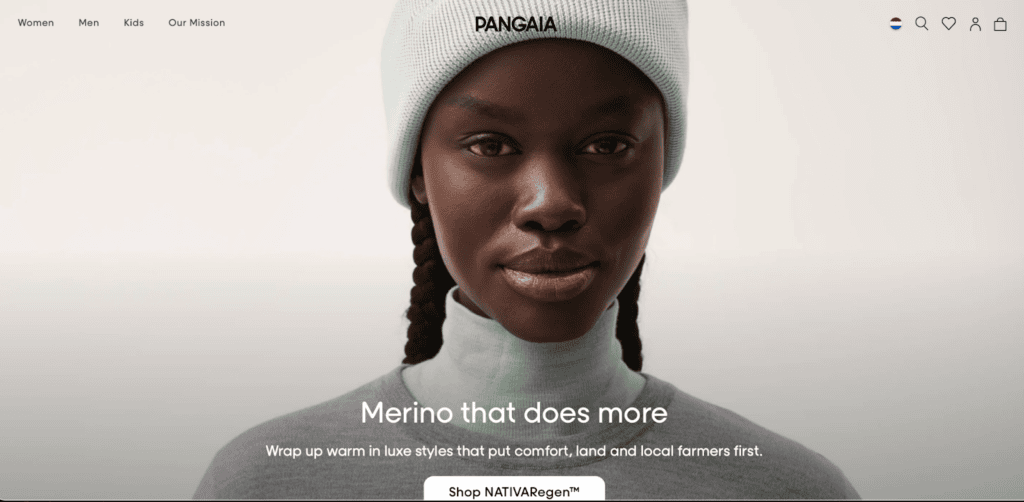
“ Every product we create is born from science and purpose, each solving an environmental problem of the industry. ”
PANGAIA
🌎
How do they ensure their sustainability?
PANGAIA ensures sustainability by diversifying materials options and shifting toward circular systems in which they regenerate nature, design out waste and pollution, and keep products and materials in use.
- Regarding sourcing materials, they opt for low-impact materials from nature and introduce new and lower-impact alternatives when possible. PANGAIA has also established their Preferred Material List (PML), which is diligently assessed based on a variety of criteria, including end-of-life pathways, visibility of the supply chain and raw material inputs, LCA results, certifications, chemical and water intensity, recycled and diverted waste streams, geographical provenance, end-use of the material, and performance against conventional alternatives.
- In 2022, 29% of PANGAIA’s collections were made with the top two most sustainable materials on this list, which include natural fabrics made fully with organic cotton, regenerative cotton, organic linen, organic hemp, organic kapok, regenerative cashmere, and recycled cashmere.
- They also make use of innovative materials to replace high-impact traditional fabrics, for example, plant-based, ethically-sourced FLWRDWN™ to replace goose and duck down, FRUTFIBER™ to replace conventional cotton, or bio-based material MIRUM® to replace animal and synthetic leather. Further down the life-cycle in the manufacturing stage, PANGAIA applies innovative treatments to reduce waste and water use. These include AIR INK®, miDori® bioWick, and the bioengineered dye technology COLORFIX.
🌐
How do they ensure their ethics?
PANGAIA binds suppliers in a Code of Conduct that covers all of the ILO’s Four Fundamental Freedoms principles.
- They also make statements regarding Diversity and Inclusion, Modern Slavery, Child Labour & Young Workers Policy, and Human Rights Policy.
- On top of that, they trace most of their supply chain, including all of the final stages of production. In 2022, they extended their transparency by mapping and publishing their Tier 1 subcontractors and Tier 2 suppliers while having 95% of their suppliers audited by a third party.
🤝
Are they part of any giving-back programs?
PANGAIA has been part of various philanthropic programs since their inception. They plant a mangrove tree for every product sold. PANGAIA is a member of 1% for the Planet, meaning that with every product you buy from PANGAIA, a sum is going to support the planet in one way or another. For example, through their partnership with Milkywire, PANGAIA launched two grassroots funds, Tomorrow Tree and Bee The Change, working collaboratively with communities in various conservation initiatives. They also partner with Coral Gardeners, an organization dedicated to saving our oceans’ coral reefs, which are in rapid decline. Additionally, they provide financial and in-kind support for humanitarian causes such as support for refugees and displaced people, racial justice and LGBTQIA+ rights, frontline workers, and young people.
🛍️
What is their product range?
- Best for: womenswear, menswear, kidswear
- Product range: hoodies, knitwear, outerwear, sweatshirts, tops, T-shirts, pants, denim, shorts, activewear, gloves, hats, socks, accessories
- Price range: $$$$
- Size range: XS–XL
FTC Cashmere: Climate-Neutral Cashmere Apparel From Zero-Waste Production
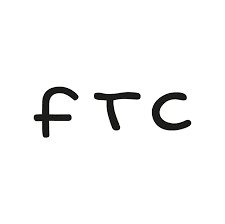
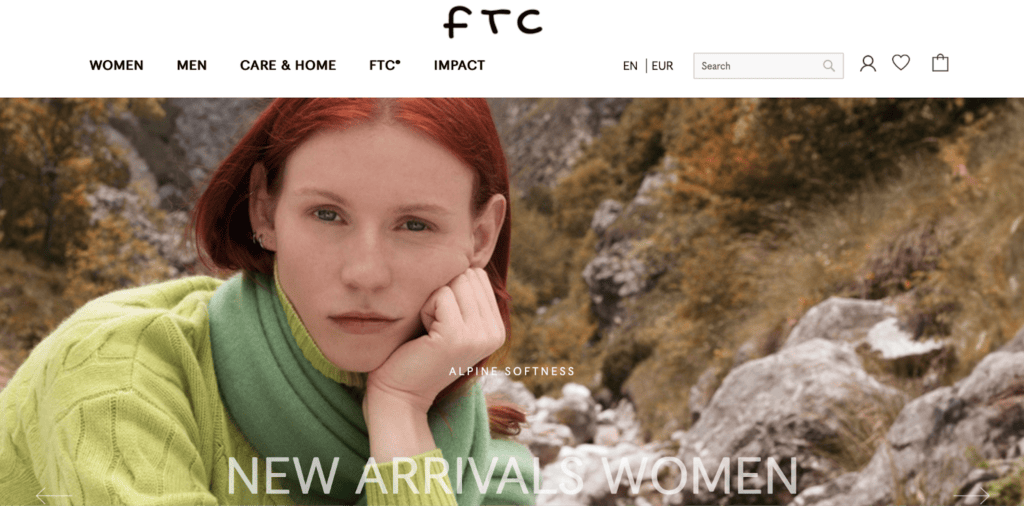
“Specializing in high-quality, cashmere knits in the premium segment, FTC Cashmere stands for elegant, pure, coveted fashion and luxury articles as well as for a strong sense of responsibility with respect to fairer, ethically correct manufacturing conditions.”
FTC Cashmere
🌎
How do they ensure their sustainability?
FTC Cashmere promotes sustainability by innovating to achieve zero-waste production and offsetting all of their carbon emissions.
- They have developed a technique to seamlessly join the threads of the leftover yarns, which remain on the bobbin after a garment is knitted. Thanks to this technology, FTC Cashmere can recirculate the cut-offs to make high-quality cashmere products in their upcycled fashion line “UpKnit – Upcycling for Uniqueness by FTC®” while leaving behind no yarn waste. Between 2019 and 2022, they reused almost a ton of waste yarn.
- Additionally, they now use FSC-certified recycled paper bags instead of polybags for packaging to reduce plastic consumption and waste. They further reduce their impact by offsetting all carbon emissions coming from their operation in reforestation and solar energy projects in China, where their farms and factories are located.
- Lastly, FTC Cashmere is certified MADE IN GREEN by OEKO-TEX®, an all-encompassing sustainability label representing transparency, social responsibility, environmentally friendly operations, and consumer safety.
🌐
How do they ensure their ethics?
FTC Cashmere ensures their ethics by committing to fair treatment toward the workers who make their products and the cashmere goat herds.
- They employ all textile workers and partners in China and thus ensure living wages, a high level of job security, and above-average employment conditions. Furthermore, FTC Cashmere has signed an exclusive contract with the local government and the farmers for the purchase of the cashmere raw material at market prices plus a premium to make sure farmers are paid fairly.
- Additionally, they trace most of their supply chain.
- Regarding animal welfare, they work with national universities to have the health of the cashmere goats regularly checked by specialists. On top of that, they set eight grounding principles spanning from grounds for breeding to general health conditions, keeping of animals, the shearing process, the transportation of animals, and all other stages of life, all while documenting each and every goat to ensure fair treatment.
🤝
Are they part of any giving-back programs?
FTC Cashmere gives back to the farmers and the communities where their products are made by building schools in the area. The schools, which are planned, financed, and constructed entirely by FTC®, provide basic school education to more than 1,000 children from 4 to 14 years of age.
🛍️
What is their product range?
- Best for: womenswear, menswear
- Product range: shirts, sweaters, gloves, hats, scarves, polos, knitwear, tops, blouses, T-shirts, socks, shorts, dresses, skirts, jackets, loungewear
- Price range: $$$$
- Size range: XS–XL
Stella McCartney: Luxurious Fashion Clothes Made Ethically and Sustainably
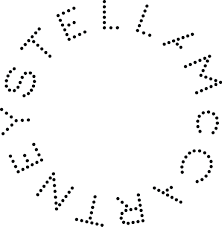

“We are committed to being an ethical, modern and honest company without compromising on luxury or quality.”
Stella McCartney
🌎
How do they ensure their sustainability?
Stella McCartney ensures sustainability by making use of the most cutting-edge and progressive materials that aim to reduce the impact on the planet and are always cruelty-free while following the principles of circularity.
- They use a medium proportion of eco-friendly and innovative materials, including GOTS-certified organic cotton, cashmere from 100% recycled waste Re.Verso™, and low-impact plant-based alternative materials (BananaTex®, VEGEA, Mylo™, MIRUM®). Further down the life-cycle, Stella McCartney employs technological advances to trace their products, lower their manufacturing impact, and increase their circularity.
- Additionally, they exclusively use paper that is either FSC-certified or made from at least 50% recycled content in their packaging. In 2014, the brand launched Clevercare, a garment labeling system covering five simple areas of clothing care: washing, temperature, drying, ironing, and dry cleaning to help extend the life of garments, decrease the number of pieces that end up in landfill, and reduce life-cycle environmental footprint.
🌐
How do they ensure their ethics?
Stella McCartney commits to transparency across supply chains through diligent reporting, measuring, and tracking.
- Stella McCartney is a member of the Ethical Trading Initiative (ETI), a human rights organization driving force in ethical trade. They also trace most of their supply chain.
- Additionally, Stella McCartney used lambswool and sheep wool certified with the Responsible Wool Standard, appropriately addressing the welfare of sheep (and their calves) and the land they graze on.
🤝
Are they part of any giving-back programs?
Stella McCartney partners with and supports many charities, including but not limited to Bioplanet, Million Trees Miami, Naked Heart Foundation, Meat Free Monday, and Sea Shepherd.
🛍️
What is their product range?
- Best for: womenswear, menswear, kidswear
- Product range: shirts, skirts, denim, sweaters, swimwear, dresses, pants, jackets, blazers, hoodies, sweatshirts, knitwear, tops, blouses, T-shirts, underwear, socks, shorts, jumpsuits, playsuits, shoes, accessories, plus size
- Price range: $$$
- Size range: XS–XXXL
Cashmere Fabrics: Fine, Odor-Resistant Natural Textiles Good for Both Cold and Warm Weather
Cashmere is a super fine and soft material derived from nature, which can keep you warm in the winter and cool in the summer. Additionally, its high breathability and odor resistance help lower the impact of its usage phase. At the end of their life, pure cashmere fabrics are readily biodegradable and suitable for composting.
Here are the life-cycle stages of cashmere fabrics and each stage’s sustainability assessment:
- Sourcing of cashmere fabrics: The raw material for cashmere fabrics is sourced from the inner coat of hair collected from a specific species of goats, mostly found in Central Asia and the Gobi Desert. The environmental impacts of raising goats are intensified in the case of cashmere goats because of the rapid increases in the number of goats grazing in relatively restricted areas to meet the ever-growing global cashmere demand. Sourcing recycled cashmere is, thus, the most sustainable as it avoids more pressure on (already) vulnerable grasslands. Alternatively, it is considered sustainable to source cashmere from responsible, regenerative, organic agricultural systems that ensure the well-being of the animals and the health of the ecosystem.
- Manufacturing of cashmere fabrics: Manufacturing cashmere fabrics starts with collecting fine fibers from the goat undercoat. In many cases, obtaining these fibers is painful and stressful for the animal and could lead to ill health or even death. Animal cruelty in cashmere production is widespread, largely because of the push for a higher yield to meet the increasing demand for this material. However, it is possible to collect cashmere down (undercoat hair) ethically and sustainably. Alternatively, manufacturing recycled wool has a high energy demand, particularly regarding breaking down wool waste to retrieve the fibers (shredding or fraying). The mechanical process of breaking down wool waste to recover the fibers often shortens the fiber length and, thus, can’t be repeated indefinitely (to allow recycled wool to be truly circular).
- Transportation of cashmere fabrics: Transporting can be a carbon-intensive stage in the life-cycle of clothing items made with cashmere fabrics due to the distances covered and emissions associated with transporting vehicles. Cashmere fabrics typically travel from pasture lands (virgin cashmere) or collection hubs (recycled cashmere) to processing and finishing factories, sorting centers, shops, and consumers’ homes before going to recycling centers or landfills.
- Usage of cashmere fabrics: The usage of cashmere is generally sustainable. Cashmere requires less frequent washes because it is a breathable, odor-resistant material with excellent moisture-wicking abilities.
- End-of-life of cashmere fabrics: The end-of-life stage for cashmere is generally sustainable because untreated wool is fully biodegradable and compostable. Blending wool fibers with synthetic fibers increases the strength and durability of the material but reduces their recyclability and degradability.
Cashmere fabrics are on a spectrum from highly unsustainable to fairly sustainable, with responsible, regenerative, organic, and recycled cashmere fibers making the more environmentally friendly options. Particularly, recycled wool, cashmere variety included, is often considered a preferred textile. Recycling cashmere waste reduces pressure on land, water, and other resources needed to raise cashmere goats.
Why Is It Important to Buy Products Made of More Sustainable Fabrics
It is important to buy products made of more sustainable fabrics because a sustainable textile industry has a lower carbon footprint, helps save natural resources, and is better for forests, animals, and humans.
Buying Sustainable Fabrics Reduces Your Carbon Footprint
The production of clothing and footwear is estimated to contribute 10% of global greenhouse gas emissions—more than all international flights and shipping combined. If the fashion industry were a country, it would be the fourth largest emitter of carbon dioxide.
One way to reduce the carbon footprint of the clothes you buy is to opt for sustainable fabrics. Sustainable fabrics, which are often made with natural or recycled fibers, have relatively low carbon footprints compared to petroleum-based fabrics. For example, organic cotton made in the US has a carbon footprint of 2.35 kg CO2 (per ton of spun fiber)—a quarter of polyester’s carbon footprint.
Buying Sustainable Fabrics Reduces Demand for Natural Resources and Waste Management
The textile industry uses water and land to grow wool and other fibers. It is estimated that 79 billion cubic meters of water were used for the sector worldwide in 2015. For example, producing a single cotton T-shirt requires as much water as one person drinks for 2.5 years (2,700 liters of fresh water).
Worse yet, the textile economy is vastly more linear than circular: the largest amount of resources used in clothes ended up in landfills (instead of being recycled to remake clothes). According to a report by the Ellen MacArthur Foundation,
- Less than 3% of materials used in the textile economy in 2015 came from recycled sources.
- In other words, more than 97% of resources used in making clothes are newly extracted.
When clothing items are disposed of within a short period of time—under a year in the case of half of the fast fashion clothes—the natural systems that provide raw materials for fabrics don’t have enough time to recover and regenerate, which could lead to ecological breakdown.
Sustainable fabrics are made with less water and emissions while lasting longer:
- Because they are durable, you don’t need to buy new clothes too often.
- Thus, you help reduce the pressure to extract more resources for making new items.
Similarly, making and consuming sustainable fabrics made with recycled materials reduces the demand for virgin materials while helping tackle waste management.
Buying Sustainable Fabrics Encourages Sustainable Management of Forests
Sustainable plant-based fabrics are made with raw materials from forests and plantations that are sustainably managed, such as complying with FSC standards.
When you buy sustainable plant-based fabrics, you discourage unsustainable forestry practices like illegal logging. You can help reduce deforestation, biodiversity loss, and the effects of climate change.
Buying Sustainable Fabrics Encourages Fairer Treatment of Animals
The fashion industry is rife with animal mistreatment when it comes to making animal-based fabrics like wool or silk. Every year, billions of animals suffer and die for clothing and accessories.
Buying sustainable vegan alternatives can help to reduce the pressure on raising more and more animals to meet the demand for animal-based fabrics while sacrificing their well-being and lives.
Suppose you have to buy fabrics made with, for example, wool or silk; make sure you only choose brands committed to cruelty-free products. In that case, you help advocate better treatments for animals raised within the textile industry.
Using Sustainable Fabrics Encourages Fairer Treatment of Textile Workers
Recent statistics from UNICEF estimated as many as 170 million child laborers worldwide, many of whom were engaged in some form of work in the textile industry. They don’t get paid minimum wages and often work long hours.
When you buy sustainable fabrics from brands that are transparent about the working conditions at their factories, you discourage the use of child labor and help promote better working conditions for textile workers.
How Can You Generally Buy More Sustainable Fabrics
The key to sustainably buying fabrics is to check on relevant environmental and original certifications.
For natural fabrics:
- Global Organic Textile Standard (GOTS): A globally-recognized certification system that ensures a certain threshold of organic content has been met. It covers manufacturing, packaging, labeling, transportation, and distribution (but not what happens in the fields where crops are grown).
- USDA Certified Biobased Product: The USDA BioPreferred® Certification is a voluntary certification offered by the United States Department of Agriculture. The certification identifies products made from plants or other renewable materials.
- Ecolabel: Ecolabel is the official European Union voluntary label recognized worldwide for certified products with a guaranteed, independently-verified low environmental impact. The label requires high environmental standards throughout the entire life-cycle: from raw material extraction through production and distribution to disposal. It also encourages companies to develop innovative, durable, easy-to-repair, and recyclable products.
For plant-based semi-natural/semi-synthetic fabrics:
- Forest Stewardship Council: An FSC certification ensures that the wool (or wool-like material) comes from responsibly managed forests that provide environmental, social, and economic benefits.
There are two types of FSC Certification:- FSC Forest Management Certification, with a focus on the origin of the wood—the forest.
- FSC Chain of Custody Certification, which focuses on the path from the forest to the customer’s home.
- Program for Endorsement of Forest Certification: PEFC’s approaches to sustainable forest management are in line with protecting the forests globally and locally and making the certificate work for everyone. Getting a PEFC certification is strict enough to ensure the sustainable management of a forest is socially just, ecologically sound, and economically viable but attainable not only by big but small forest owners.
For recycled fabrics:
- Recycled Claim Standard (RCS): The Textile Exchange RCS was originally developed as an international, voluntary standard that sets requirements for third-party certification of Recycled input and chain of custody.
- The Global Recycled Standard (GRS): The Global Recycled Standard (GRS) is an international, voluntary, full product standard that sets requirements for third-party certification of Recycled Content, chain of custody, social and environmental practices, and chemical restrictions. It can be used for any product with more than 20% recycled material.
For all types of fabrics:
- STeP by OEKO-TEX®: STeP by OEKO-TEX® is an independent certification system for brands, retailers, and manufacturers from the textile and leather industry. It communicates organizational environmental measures, including reducing carbon footprint and water usage.
- OEKO-TEX® Standard 100: OEKO-TEX® labels aim to ensure that products pose no risk to human health (i.e., containing banned chemicals).
Some certifications that are signaling brands’ efforts toward lowered environmental impacts and a circular economy are:
- B Corp Certification: The label B Corp is a certification reserved for for-profit companies. Certified holders are assessed on their social and environmental impacts.
- Cradle2Cradle certification: Cradle2Cradle provides a standardized approach to material circularity. It assesses whether products have been suitably designed and made with the circular economy in mind covering five critical categories: material health, material reuse, renewable energy and carbon management, water stewardship, and social fairness.
Final Thoughts
Cashmere fabrics are on a spectrum from unsustainable to sustainable, largely depending on the farming systems in which cashmere goats are raised for their inner coat of hair. Responsible, regenerative, and organic cashmere fabrics are sourced from farms where the welfare of goats and lands are taken care of, leading to higher sustainability. Additionally, recycled wool, including recycled cashmere, is among the most sustainable textile materials largely because recycling wool waste reduces pressure on land, water, and other resources needed to raise animals for their hair or fleece.
By purchasing new or pre-loved cashmere clothes from responsible, regenerative, organic systems or recycled materials made by brands that commit to sustainability, you support their mission to create a fairer and less harmful textile industry for all lives on Earth.
Here is the list (again) of the most sustainable hemp clothing brands:
- Patagonia
- Reformation
- Ecoalf
- ASKET
- Rifò
- Amount Vert
- PANGAIA
- FTC Cashmere
- Stella McCartney
To make your use of these fabrics even more sustainable, follow these steps:
- Buy second-hand, recycled, or upcycled clothes made with responsible, regenerative, organic cashmere.
- While using cashmere clothes, maximize the number of wears between washes and keep them as long as possible.
- At the end-of-life of your cashmere clothes, upcycle the materials to extend their usage and arrange for them to be recycled or properly disposed of.
Stay impactful,

Sources
- Impactful Ninja: How Sustainable Are Cashmere Fabrics? A Life-Cycle Analysis
- Britannica: cashmere goat
- Impactful Ninja: How Sustainable Are Recycled Wool Fabrics? A Life-Cycle Analysis
- Common Objective: REPORTS & TOOLS | MADE-BY ENVIRONMENTAL BENCHMARK FOR FIBERS
- Science Direct: Life-cycle assessment (LCA)
- Patagonia: Home
- Reformation: Home
- Ecoalf: Home
- ASKET: Home
- Rifo: Home
- Amour Vert: Home
- PANGAIA : Home
- FTC Cashmere: Home
- Stella McCartney: Home
- Patagonia: The Climate Crisis Is Our Business
- Patagonia: The Climate Crisis Is Our Business | No More Virgin Petroleum Fibers by 2025
- Patagonia: The Climate Crisis Is Our Business | Is Each Product Worth the Environmental Cost?
- Patagonia: The Climate Crisis Is Our Business | Help Suppliers Cut Emissions
- Patagonia: Environmental Responsibility
- Patagonia: Recycled Wool
- Patagonia: Recycled Cotton
- Patagonia: Hemp
- Patagonia: Man-made Cellulose Fibers
- Patagonia: WORN WEAR
- B Corporation: Patagonia
- Bluesign®: Home
- Fair Trade: Home
- FAIR TRADE CERTIFIED: Improving Lives, Protecting the Planet.
- Patagonia: Social Responsibility
- Patagonia: Fair Trade
- Patagonia: Fair Labor Association
- Patagonia: Living Wage Program
- Patagonia: Migrant Workers Program
- Patagonia: Responsible Purchasing Practices
- Patagonia: Where We Do Business
- Patagonia: For the Love of Merino
- Patagonia: Patagonia Wool Standard (PWS) For Animal Welfare, Land Management and Traceability
- Textile Exchange: Responsible Wool Standard
- Patagonia: 1% for the Planet
- Forbes: Yvon Chouinard And The Patagonia Purpose Trust— What Is It And Will It Work?
- Fast Company: Patagonia uses capitalism to save the planet with the Holdfast Collective
- The New York Times: Patagonia Founder Gives Away the Company to Fight Climate Change
- Reformation: Sustainability
- Impactful Ninja: How Sustainable Are Recycled Cotton Fabrics? A Life-Cycle Analysis
- Impactful Ninja: How Sustainable Are TENCELTM Fabrics? A Life-Cycle Analysis
- TencelTM: TENCEL™ x REFIBRA™ technology
- Reformation: Circularity
- Reformation: RefRecycling
- Reformation: What is RefScale
- CLIMATE NEUTRAL: Reformation
- The Reformation: Supplier Code of Conduct
- International Labor Organization (ILO): Home
- Reformation: Supplier Code of Conduct
- Reformation: Factories
- Transparency Pledge: Home
- Open Supply Hub: Home
- Fair Labor Association: Home
- Ecoalf: Materials
- Ecoalf: History
- Ecoalf: DON’T THINK IT’S A UTOPIA | DISCOVER OUR 2021 SUSTAINABILITY REPORT
- Impactful Ninja: How Sustainable Are Recycled Fabrics? A Life-Cycle Analysis
- Impactful Ninja: How Sustainable Are Recycled Polyester Fabrics? A Life-Cycle Analysis
- Impactful Ninja: How Sustainable Are Recycled Wool Fabrics? A Life-Cycle Analysis
- Impactful Ninja: How Sustainable Are Natural Fabrics? A Life-Cycle Analysis
- Impactful Ninja: How Sustainable Are Kapok Fabrics? A Life-Cycle Analysis
- B Corporation: Ecoalf
- Ecoalf: Sustainable Report 2021 | DON’T THINK IT’S A UTOPIA
- Ecoalf: ECOALF foundation
- Ecoalf: Upcycling the Oceans
- Ecoalf: Because There’s No Planet B
- Ecoalf: Personas
- ASKET: The Repair Program
- ASKET: The Revival Program
- Textile Exchange: The RCS and GRS are designed to boost the use of recycled materials
- ASKET: Materials | Recycled Cashmere
- ASKET: Materials | Recycled Wool
- ASKET: Materials | Recycled Synthetics
- ASKET: The Care Program
- ASKET: Materials | Organic Cotton
- ASKET: Materials | Linen
- ASKET: Materials | Lyocell
- ASKET: Full Transparency
- ASKET: TRACKING HOW WE FOLLOW OUR PRINCIPLES
- ASKET: Materials | Traceable Merino
- Rifò: Who is Rifò
- Rifò: Secondary Raw Materials
- Rifò:Rifò: Secondary Raw Materials | Recycle Cashmere
- Rifò: Secondary Raw Materials | Recycle Wool
- Rifò: Secondary Raw Materials | Recycle denim
- Rifò: Secondary Raw Materials | Recycle cotton
- Rifò: Secondary Raw Materials | Recycle silk
- Rifò: Rifò Sustainable Packaging
- Johnstons of Elgin: SUSTAINABILITY | ENERGY & CARBON
- Johnstons of Elgin: SUSTAINABILITY | MANUFACTURING WASTE
- Johnstons of Elgin: SUSTAINABILITY | GRASSLAND PRESERVATION
- Johnstons of Elgin: SUSTAINABILITY | PLASTICS
- Johnstons of Elgin: IMPACT REPORT 2023
- Good On You: Brand Directory | Johnstons of Elgin
- Johnstons of Elgin: SUSTAINABILITY | CIRCULARITY
- CASHMERE CIRCLE: Johnstons of Elgin Cashmere Care Partnership
- Johnstons of Elgin: KHARAATSAI | Our Young Herders Programme in Mongolia
- Johnstons of Elgin: WHAT IS A DIGITAL ID?
- Johnstons of Elgin: SUSTAINABILITY | FAIR WORK
- Johnstons of Elgin: SUSTAINABILITY | ANIMAL WELFAR
- Good On You: Brand Directory | Rifò
- Rifò: Sustainability Report 2022
- Rifò: Rifò’s used garment collection
- VOGUE: Boycott Black Friday
- B Corporation: Rifò
- Rifò: Code of Conduct
- Rifò:Nei Nostri Panni | A concrete social impact project
- Good On You: Brand Directory | Amount Vert
- Impactful Ninja: How Sustainable Are Linen Fabrics? A Life-Cycle Analysis
- Impactful Ninja: How Sustainable Are Polyester Fabrics? A Life-Cycle Analysis
- Amount Vert: Our Signature Fabrics
- Amount Vert: ReAmour
- American Forests® : Home
- Amount Vert: Buy a tee, plant a tree
- PANGAIA: Innovative Materials and Systems
- PANGAIA: PREFERRED MATERIAL LIST 2022
- PANGAIA: Impact Report 2022
- PANGAIA: Organic Cotton | Plant Fibers
- Impactful Ninja: How Sustainable Are Hemp Fabrics? A Life-Cycle Analysis
- Impactful Ninja: How Sustainable Are Kapok Fabrics? A Life-Cycle Analysis
- PANGAIA: Recycled Cashmere | Earth Positive Fabrics
- PANGAIA: Science & Innovative Hub
- PANGAIA: FLWRDWN™
- PANGAIA: FRUTFIBER™
- PANGAIA: MIRUM®
- PANGAIA: AIR INK®
- PANGAIA: miDori® bioWick
- PANGAIA: COLORFIX
- PANGAIA: Code of Conduct
- Good On You: Brand Directory | PANGAIA
- PANGAIA: Diversity and Inclusion Statement
- PANGAIA: Modern Slavery Statement
- PANGAIA: Child Labour & Young Workers Policy
- PANGAIA: Human Rights Policy
- PANGAIA: Giving back
- 1% for the Planet: Home
- FTC Cashmere: Zero Waste Production
- FTC Cashmere: UpKnit – Upcycling for Uniqueness by FTC®
- FTC Cashmere: OUR SUPPLY CHAIN
- Climate Partner: ClimateID Tracking
- FTC Cashmere: CLIMATE NEUTRAL
- OEKO-TEX: MADE IN GREEN by OEKO-TEX®
- FTC Cashmere: Responsibility | Our People
- Good On You: Brand Directory | FTC Cashmere
- FTC Cashmere: Responsibility | Our Cashmere Goats
- Stella McCartney: Sustainability
- Stella McCartney: Circularity
- Good On You: Brand Directory | Stella McCartney
- Global Organic Textile Standard (GOTS): Home
- Stella McCartney: Organic cotton
- Stella McCartney: Recycled cashmere
- Stella McCartney: BananaTex®
- Stella McCartney: VEGEA
- Stella McCartney: Mylo™
- Stella McCartney: MIRUM®
- Stella McCartney: Traceability and Blockchain Technology
- Stella McCartney: Metals
- Stella McCartney: Spotlight on Airslide
- Stella McCartney: Paper and Packaging
- Stella McCartney: Clevercare
- Stella McCartney: Measuring our impact
- Ethical Trading Initiative: Home
- Stella McCartney: Charities
- Million Trees Miami: Home
- Naked Heart Foundation: Home
- Meat Free Monday: Home
- Sea Shepherd: Home
- MDPI: Life Cycle Assessment (LCA) of MWool® Recycled Wool Fibers
- MDPI: Textiles for Circular Fashion: The Logic behind Recycling Options
- European Parliament: The impact of textile production and waste on the environment (infographic)
- Science Direct: The challenge of “Depeche Mode” in the fashion industry – Does the industry have the capacity to become sustainable through circular economic principles, a scoping review
- Science Direct: Carbon Footprint of Textile and Clothing Products
- European Parliament: Environmental impact of the textile and clothing industry
- European Parliament: What if fashion were good for the planet?
- Ellen MacArthur Foundation: A New Textiles Economy: Redesigning fashion’s future
- McKinsey: Style that’s sustainable: A new fast-fashion formula
- Forest Stewardship Council: Home
- Our World in Data: Deforestation and Forest Loss
- Our World in Data: Renewable Energy
- Peta: Animals Used For Clothing
- The Guardian: Child labour in the fashion supply chain
- BioPreferred: WHAT IS THE BIOPREFERRED PROGRAM?
- European Commission: Environment | EU Ecolabel
- Forest Stewardship Council
- FSC Forest Management Certification
- FSC Chain of Custody Certification
- Program for Endorsement of Forest Certification
- Impactful Ninja: How Sustainable Are Semi-Natural/Semi-Synthetic Fabrics? A Life-Cycle Analysis
- OEKO-TEX: Certification according to STeP by OEKO-TEX®
- OEKO-TEX: OEKO-TEX® Standard 100
- B Corp Certification: Home
- C2CCertified: Home



